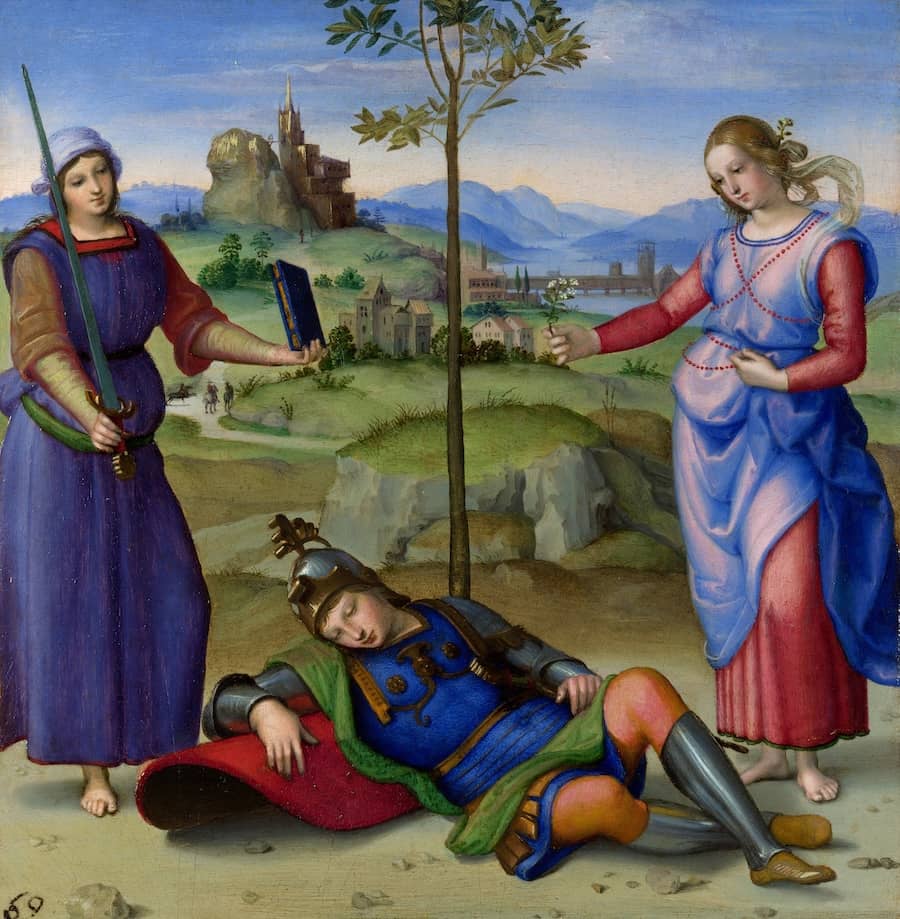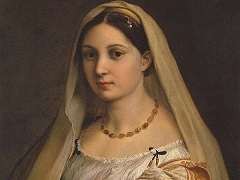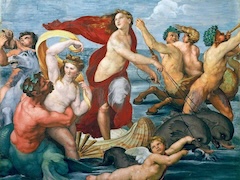Vision of a Knight - by Raphael

Raphael's Vision of a Knight shows a young man in armour asleep under a tree, flanked by two women. One is holding a book and a sword, the other holds a flower. This small picture is an allegorical painting (a figurative representation of an abstract idea).
The most likely source is an allegory about choices taken from a passage in the Punica, an epic poem recounting the Second Punic War by the Latin poet Silius Italicus. Resting in the shade of a bay tree, the young soldier Scipio has a vision of two ladies that he had to choose between: Venus (pleasure) and Minverva (Virtue).
Minerva was the Roman goddess of wisdom and sponsor of arts, trade, and defense. Behind her is a clear path which symbolizes dutiful work that leads to a castle.
Venus, in the looser robes, is the Roman goddess of love, and behind whom is a steeper, rockier path that leads to distant lands, or the sea where Venus was born, via river .
The items held by the two represent their ideals: the book, sword suggest the ideals of scholarship, law, and defense. The flower suggest the ideals of a lover both ideals a knight might debate choosing from while daydreaming.
The laurel tree was used to fashion the laurel wreath of ancient Greece, a symbol of highest status. A wreath of bay laurels was given as the prize at the Pythian Games because the games were in honor of Apollo, and the laurel was one of his symbols. A crown of Laurel's or the Laurel on the helmet would be a symbol of fame.
















